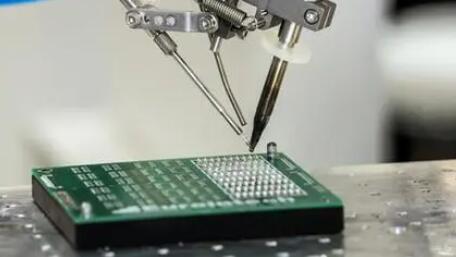Surface mount component is the main technology of directly attaching electronic components to a substrate, that is, encapsulating chip components and placing them on a printed circuit board. It uses a reflow furnace to melt the solder alloy interconnecting electronic systems, thereby achieving interconnection between chip components and the substrate.

The installation and welding of surface assembly components mainly adopt automated installation and welding methods (such as wave soldering, reflow soldering, etc.) for installation and welding. The installation and welding of surface assembly components are mainly divided into two basic process methods, namely the solder paste/reflow welding process and the patch adhesive/wave soldering process.
1. Welding paste/reflow welding process
The production line for solder paste/reflow soldering mainly focuses on the installation and welding of welding components. It is composed of three major equipment: solder paste printing, SMT machine, and reflow soldering furnace. It involves first applying solder paste to the solder pads of printed circuit boards, and then attaching the components to the solder pads coated with solder paste through a high-precision automated equipment placement machine that integrates light, electricity, gas, and machinery. Finally, the solder paste is melted again after being heated in a reflow soldering furnace, and the surface mount components are firmly welded to the solder pads.
2. Chip adhesive/wave soldering process
When a mixed installation of surface mount components and traditional jack components is required on a printed circuit board, the surface mount adhesive/wave soldering process is used. This process involves first applying adhesive to the gaps between the solder pads on the A side of the circuit board, then flipping the surface mount component onto the A side of the circuit board. On the B-side, the through-hole components are connected, so that the pins of the through-hole and the surface mount components are on the A-side. After wave soldering, the plug-in and surface mount components can be welded together.
The main process of soldering and installation of surface mount components
1) Installing the substrate: Fix the substrate on the countertop
2) Pasting or gluing: According to the size of the component, apply the patch adhesive to a predetermined position. If the assembly process uses reflow soldering, it is necessary to apply the adhesive at the substrate solder pad. Currently, medium to high-temperature Sn-Ag solder paste is commonly used.
3) Installation of surface mount: Generally, an automated professional surface mounting machine is used, which mainly includes the suction head for picking and placing surface mount components, X-Y workbench, program control system, and feeding part.
4) Heat curing: After dispensing and pasting, the adhesive is cured through a curing furnace under a certain temperature and time control., Thus improving the bonding strength of the surface mount and avoiding displacement of components due to vibration and impact during storage and transportation.
5) Surface mount soldering: There are two methods: wave soldering with adhesive bonding and reflow soldering with solder paste bonding.
6) Cleaning: Remove residual adhesive to prevent corrosion of the substrate.
7) Inspection and testing: Inspect the weldability according to standards and testing requirements.
With the increasing application of surface mount components, surface mount technology has gradually become the mainstream technology in electronic assembly. Surface mount components are different from through-hole mount components, and their welding technology requirements are much higher than those of through-hole mount components.